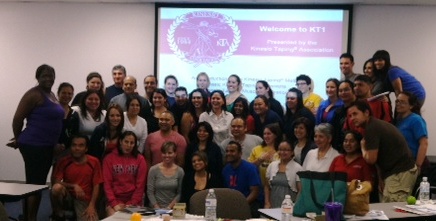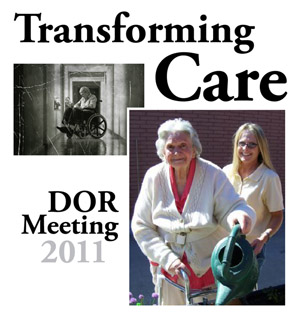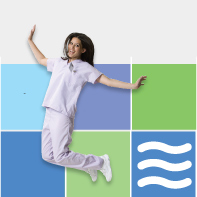When Texas hosts a CEU course, they think BIG. Jon Anderson, Texas Therapy Resource, identified a growing interest and need for Kinesio Taping, and soon after he posted the course details, interested therapists from across South Texas clamored to register. Jamie Funk quickly worked with our Service Center to set up a PayPal account for outside therapists to register and pay through www.ensigntherapy.com. Deb Bielek, Jon, and Jamie met and talked with therapists throughout the 2-day course to share information about our facilities and our unique culture. 38 therapists attended in all, with 20 outside therapists from around the community. Jon used the money earned to pay for the course and the venue at South Texas College, and the residual earnings will go toward a scholarship fund for the college’s PTA/COTA program.

“Something better than any laser, wrap, or electric massager…The Tape. It is a special hot-pink athletic tape that came from Japan and seemed to have special powers. Every morning before the stage, they would tape us all up, different parts of our bodies . . . George’s back, Chechu’s knees. Sometimes we’d be so wrapped up in hot-pink tape that we’d look like dolls, a bunch of broken dolls. But the next day the pain disappeared–it was gone.”
—-Excerpt from Lance Armstrong’s book, “Every Second Counts”
The description above of this magical tape is catching on and spreading like wildfire, and has now made its way from the athlete to the geriatric setting. Therapists working in skilled nursing facilities supported by Ensign Facility Services, Inc. (EFSI) have taken notice and recently participated in a three-part certification course to become certified Kinesiotape therapists. The first and second phases of the course (K1 and K2) were held on January 21 and 22 for nearly 40 therapists in South Texas (19 Ensign Therapists, and 21 outside therapists). The 16 CEU credit hour course received an overwhelming response and filled up in record time with nearly 30 outside therapists on the waiting list.
In K1 and K2, therapists learn about the tape itself and a variety of treatment approaches for the tape. To summarize, the tape is elastic-woven and comes in a variety of widths, colors and types. It is cut into different shapes and applied with a slight to moderate stretch and placed on the skin. Although it may look like conventional athletic tape, it is fundamentally different in that it has a specific elasticity that plays a role in its effectiveness. The tape should always be applied by professionals trained specifically for the different applications. Most often the tape is strategically placed in “waves” and is effective for 3 to 5 days before it needs to be replaced. You can shower or swim with it and it doesn’t contain latex, which is great for those with latex allergies.
In addition, the taping technique is based on the body’s own natural healing process. Rather than “strapping down” the muscle, the philosophy is to give free range of motion and allow the body’s own muscular system to heal itself bio-mechanically. Application of Kinesiotape encourages muscles to function as they would if they didn’t need the tape, which improves not only body movement but circulation of venous and lymph flows. If your sore muscles are supported and allowed to heal, you are not in as much pain and you relax. Your performance improves along with faster healing.
K3 course, which is an 8-hour CEU course, will be held for the same group of therapists on April 14 at South Texas College in McAllen, Texas, and will focus on advanced applications of the tape. Upon completion of this final third course, participants will have the ability to sit for the Kinesiotape certification exam and become certified Kinesiotape therapists. If you would like to participate in K1 and K2, an additional course is being set up for the Dallas area for early summer, an e-mail will be sent to the field when the dates are set.




